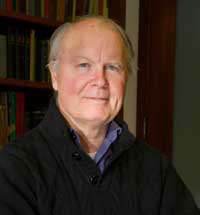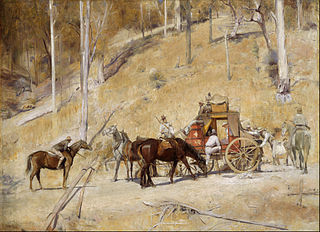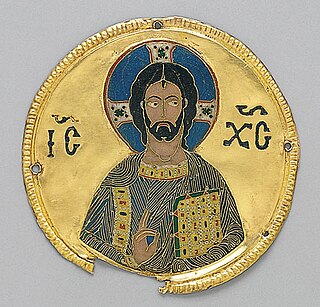Related Research Articles

The Council of Chalcedon was the fourth ecumenical council of the Christian Church. It was convoked by the Roman emperor Marcian. The council convened in the city of Chalcedon, Bithynia from 8 October to 1 November 451 AD. The council was attended by 520 bishops or their representatives, making it the largest and best-documented of the first seven ecumenical councils. The principal purpose of the council was to re-assert the teachings of the ecumenical Council of Ephesus against the heresies of Eutyches and Nestorius. Such heresies attempted to dismantle and separate Christ's divine nature from his humanity (Nestorianism) and further, to limit Christ as solely divine in nature (Monophysitism).

Ephesus was a city in ancient Greece on the coast of Ionia, 3 kilometres (1.9 mi) southwest of present-day Selçuk in İzmir Province, Turkey. It was built in the 10th century BC on the site of the former Arzawan capital by Attic and Ionian Greek colonists. During the Classical Greek era, it was one of twelve cities that were members of the Ionian League. The city came under the control of the Roman Republic in 129 BC.

Western Christianity is one of two sub-divisions of Christianity. Western Christianity is composed of the Latin Church and Protestantism, together with their offshoots such as the Old Catholic Church, Independent Catholicism and Restorationism.

Eastern Christianity comprises Christian traditions and church families that originally developed during classical and late antiquity in Western Asia, Northeast Africa, Eastern Europe, Southeastern Europe, Asia Minor, the Malabar coast of South Asia, and parts of the Far East. The term does not describe a single communion or religious denomination.

Theodosius II was Roman emperor for most of his life, proclaimed augustus as an infant in 402 and ruling as the eastern Empire's sole emperor after the death of his father Arcadius in 408. His reign was marked by the promulgation of the Theodosian law code and the construction of the Theodosian Walls of Constantinople. He also presided over the outbreak of two great Christological controversies, Nestorianism and Eutychianism.

Banditry is a type of organized crime committed by outlaws typically involving the threat or use of violence. A person who engages in banditry is known as a bandit and primarily commits crimes such as extortion, robbery, and murder, either as an individual or in groups. Banditry is a vague concept of criminality and in modern usage can be synonymous for gangsterism, brigandage, marauding, and thievery.

In Christianity, a martyr is a person considered to have died because of their testimony for Jesus or faith in Jesus. In years of the early church, stories depict this often occurring through death by sawing, stoning, crucifixion, burning at the stake or other forms of torture and capital punishment. The word martyr comes from the Koine word μάρτυς, mártys, which means "witness" or "testimony".
Eusebius of Dorylaeum was the 5th-century bishop of Dorylaeum, who spoke out against dissident teachings, especially those of Nestorius and Eutyches, during the period of Christological controversy. After succeeding in having them expelled from their positions, Eusebius was himself deposed and only reinstated two years later, after which the doctrine in dispute was more precisely defined.

Brent Donald Shaw is a Canadian historian and the current Andrew Fleming West Professor of Classics at Princeton University. His principal contributions center on the regional history of the Roman world with special emphasis on the African provinces of the Roman Empire, the demographic and social history of the Roman family, and problems of violence and social order.
Greek East and Latin West are terms used to distinguish between the two parts of the Greco-Roman world and of Medieval Christendom, specifically the eastern regions where Greek was the lingua franca and the western parts where Latin filled this role. Greek was spread in the context of Hellenization, whereas Latin was the official administrative language of Roman Empire. In the east, where both languages co-existed within the Roman administration for several centuries, the use of Latin ultimately declined as the role of Greek was further encouraged by administrative changes in the empire's structure between the 3rd and 5th centuries, which led to the split between the Eastern Roman Empire and the Western Roman Empire. This Greek-Latin divide continued with the East-West schism of the Christian world during the Early Middle Ages.

Social banditry or social crime is a form of lower class social resistance involving behavior that by law is illegal but is supported by wider "oppressed" society as being moral and acceptable. The term social bandit was invented by the Marxist historian Eric Hobsbawm in his 1959 book Primitive Rebels and 1969 book Bandits. Hobsbawm characterized social banditry as a primitive form of class struggle and class resistance in usually pre-industrial and frontier societies. He further expanded the field in the 1969 study Bandits. Social banditry is a widespread phenomenon that has occurred in many societies throughout recorded history, and forms of social banditry still exist, as evidenced by piracy and organized crime syndicates. Later social scientists have also discussed the term's applicability to more modern forms of crime, like street gangs and the economy associated with the trade in illegal drugs.
In the history of Christianity, the first seven ecumenical councils include the following: the First Council of Nicaea in 325, the First Council of Constantinople in 381, the Council of Ephesus in 431, the Council of Chalcedon in 451, the Second Council of Constantinople in 553, the Third Council of Constantinople from 680–681 and finally, the Second Council of Nicaea in 787. All of the seven councils were convened in modern-day Turkey.

The East–West Schism that occurred in 1054 represents one of the most significant events in the history of Christianity. It includes various events and processes that led to the schism and also those events and processes that occurred as a result of the schism. Eastern and Western Christians had a history of differences and disagreements, some dating back to the period of Early Christianity. At the very root of what later became the Great Schism were several questions of pneumatology and ecclesiology. The most important theological difference occurred over various questions regarding the procession of the Holy Spirit, and the use of the filioque clause in the Nicene Creed. One of the main ecclesiological issues was the question of papal supremacy. Other points of difference were related to various liturgical, ritual, and disciplinary customs and practices. Some political and cultural processes also contributed to the breakout of the schism.

In the 5th century in Christianity, there were many developments which led to further fracturing of the State church of the Roman Empire. Emperor Theodosius II called two synods in Ephesus, one in 431 and one in 449, that addressed the teachings of Patriarch of Constantinople Nestorius and similar teachings. Nestorius had taught that Christ's divine and human nature were distinct persons, and hence Mary was the mother of Christ but not the mother of God. The Council rejected Nestorius' view causing many churches, centered on the School of Edessa, to a Nestorian break with the imperial church. Persecuted within the Roman Empire, many Nestorians fled to Persia and joined the Sassanid Church thereby making it a center of Nestorianism. By the end of the 5th century, the global Christian population was estimated at 10-11 million. In 451 the Council of Chalcedon was held to clarify the issue further. The council ultimately stated that Christ's divine and human nature were separate but both part of a single entity, a viewpoint rejected by many churches who called themselves miaphysites. The resulting schism created a communion of churches, including the Armenian, Syrian, and Egyptian churches, that is today known as Oriental Orthodoxy. In spite of these schisms, however, the imperial church still came to represent the majority of Christians within the Roman Empire.

Christianity in the 11th century is marked primarily by the Great Schism of the Church, which formally divided the State church of the Roman Empire into Eastern (Greek) and Western (Latin) branches.

Christianity in late antiquity traces Christianity during the Christian Roman Empire – the period from the rise of Christianity under Emperor Constantine, until the fall of the Western Roman Empire. The end-date of this period varies because the transition to the sub-Roman period occurred gradually and at different times in different areas. One may generally date late ancient Christianity as lasting to the late 6th century and the re-conquests under Justinian of the Byzantine Empire, though a more traditional end-date is 476, the year in which Odoacer deposed Romulus Augustus, traditionally considered the last western emperor.

The state church of the Roman Empire refers to the church approved by the Roman emperors after Theodosius I issued the Edict of Thessalonica in 380, which recognized the catholic orthodoxy of Nicene Christians in the Great Church as the Roman Empire's state religion. Most historians refer to the Nicene church associated with emperors in a variety of ways: as the catholic church, the orthodox church, the imperial church, the imperial Roman church, or the Byzantine church although some of those terms are also used for wider communions extending outside the Roman Empire. The Eastern Orthodox Church, Oriental Orthodoxy, and the Catholic Church all claim to stand in continuity from the Nicene church to which Theodosius granted recognition, but do not consider it to be a creation of the Roman Empire.
Sectarian violence among Christians is a recurring phenomenon, in which Christians engage in a form of communal violence known as sectarian violence. This violence can often be attributed to differences of religious beliefs between sects of Christianity (sectarianism). Sectarian violence among Christians was common especially during late antiquity and the years surrounding the protestant reformation, in which a German monk named Martin Luther disputed some of the Catholic Church's practices; particularly the doctrine of Indulgences, and was crucial in the creation of a new sect of Christianity known as Protestantism. During the latter half of the Renaissance was when sectarianism related violence was most common among Christians. Conflicts like the European wars of religion or Dutch Revolt ravaged Western Europe. In France there were the French Wars of Religion and in the United Kingdom anti-Catholic hate was heightened by the Gunpowder Plot of 1605. And while sectarian violence may seem like an archaic footnote today, sectarian violence among Christians still persists in the modern world with groups such as the Ku Klux Klan perpetuating violence among Catholics.
Bulla Felix was an Italian bandit leader of a rebel state to Rome, active around 205–207 AD, during the reign of the Roman emperor Septimius Severus. He united and formed a regiment of over 600 men, among them runaway slaves and imperial freedmen, and eluded capture for more than two years despite pursuit by a force of Roman soldiers under the command of the emperor himself.
Dioclea or Dioklea, Dioclia or Dioklia, Diocleia or Diokleia, was a town of ancient Phrygia, inhabited during Roman and Byzantine times.
References
- ↑ "Larceny". Webster's Online Dictionary. Archived from the original on 2007-10-12. Retrieved 2008-01-10.
- ↑ Grunewald, Thomas (2004). Bandits in the Roman Empire: Myth and Reality. Taylor & Francis. p. 40. ISBN 9780415327442.
- ↑ Grunewald, Bandits in the Roman Empire, pp. 10ff., 58, et passim.
- ↑ Michael Gaddis, There Is No Crime for Those Who Have Christ: Religious Violence in the Christian Roman Empire (University of California Press, 2005), pp. 20, 151.
- ↑ Giardina, Andrea, ed. (1993). The Romans. University of Chicago Press. p. 305. ISBN 9780226290492.
- ↑ Gaddis, Religious Violence in the Christian Roman Empire, p. 75.
- ↑ John-Peter Pham, Heirs of the Fisherman : Behind the Scenes of Papal Death and Succession (Oxford University Press, 2004), p. 296.
- ↑ Russell, Frederick H. (1977). The Just War in the Middle Ages. Cambridge University Press. p. 5. ISBN 9780521292764.